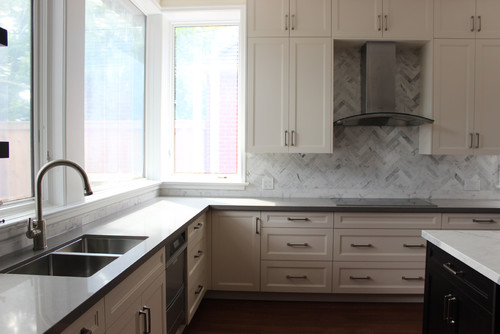The cabinets that are installed in the home are one of the most important features on the property. Not only are cabinets used to store pots and pans, but they also contribute to the aesthetics and design of the home. To ensure that you know how to measure the cabinets before calling a pro, there are a few tips to follow to ensure that everything fits.
Measure the Length of the Walls
When installing cabinets in residential properties like Alair Homes Forest Hill Toronto, it’s important to measure the length of the walls to determine the width of the cabinets that should be built for the space. Round to one-sixteenth of an inch when you’re measuring cabinets that are going to be replaced. You can also measure the entire wall if you’re installing cabinets in a newly-built home.
Find the Center of the Sink
Avoid changing the layout of your kitchen when installing new cabinets to avoid complications with the process. Build the cabinets around the sink, stove, and windows that are already in place and determine the center point. This will allow you to have plenty of balance and make everything even when you measure the room for the cabinets. When finding the center point, begin at the end of the nearest wall and measure the length of the space towards the sink. When you need to find the center point of the stove, you can repeat the previous step.
You’ll also need to write down the center point of the window with the width and height measured. Don’t forget to include the trim in your measurements to ensure that the cabinets can fit comfortably without overlapping features that are already present in the room.
Measure the Height of the Ceiling
By measuring the height of the ceiling, you can determine how high your cabinets need to be by factoring in a few numbers. Keep in mind that the standard height of most lower cabinets is 34 1/2 inches and backsplashes have an average height of 18 inches. Upper cabinets in kitchens usually have a height of 30 to 39 inches.
Although it’s important to keep in mind the average measurements of most kitchens, you should take note of any exceptions in your own home and factor them in.
Be Precise
One of the most common mistakes that many people make when measuring cabinets is not having enough precision with the process. Avoid estimating the measurements and double-check your work to ensure that you have the right numbers. You can also ask a professional to measure everything one last time before the cabinets are built and installed. Keep in mind that every fraction matters when it comes to determining the size of your cabinets. Mistakes during the process can often cost hundreds to thousands of dollars to fix and can affect the entire design of the room if not done correctly the first time.
Sketch Everything Out
It’s important to draw out a rough sketch of your kitchen to ensure that you can record all of your measurements and make them easy to understand. Label all of the windows, doorways, and the appliances. Write down everything with a pencil so you can erase them if any mistakes are made when remeasuring everything.
